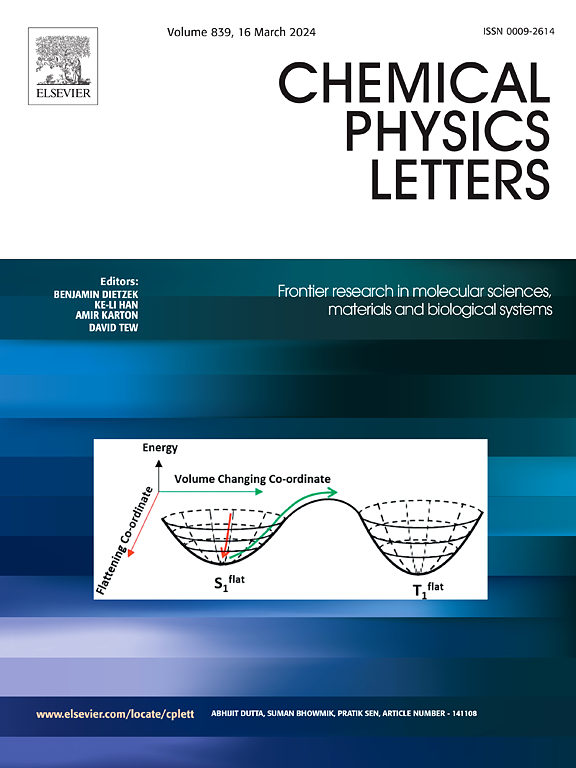Theoretical insights into “D-A-D” type Aza-BODIPY dyes for enhanced photothermal performance
IF 3.1
3区 化学
Q3 CHEMISTRY, PHYSICAL
引用次数: 0
Abstract
Developing photothermal agents (PTAs) with both strong near-infrared absorption and high photothermal conversion efficiency is essential for enhancing the efficacy of cancer photothermal therapy (PTT). In this study, theoretical methods are used to systematically investigate the effects of molecular conformation, excited-state behavior, and intermolecular interactions of “D-A-D” type Aza-BODIPY dyes (BDP1, BDP2, BDP3, BDP4) on their near-infrared absorption and photothermal properties. Geometric structure, excited-state data, and frontier molecular orbital analysis reveal that enhancing the electron-donating ability of the donor group at the 1,7-positions of Aza-BODIPY can narrow the HOMO-LUMO gap, driving a redshift in the absorption spectrum. Simultaneously, strong electron-donating groups can induce a photoinduced electron transfer process, facilitating non-radiative decay. Molecular dynamics simulations further reveal the formation of dimer head-to-tail stacking structures for BDP1, BDP2, BDP3, and BDP4, with slip angles indicating the potential for CT-coupled J-aggregation formation. Additionally, enhanced electron-donating ability at the 1,7-positions strengthens π-π stacking, promoting the conversion of non-radiative heat energy. This study elucidates the influence of D-A-D type Aza-BODIPY dyes on photothermal performance and provides a theoretical basis for the design of efficient near-infrared photothermal agents.

“D-A-D”型Aza-BODIPY染料增强光热性能的理论见解
开发具有强近红外吸收和高光热转换效率的光热剂是提高肿瘤光热治疗效果的必要条件。本研究采用理论方法系统研究了“D-A-D”型Aza-BODIPY染料(BDP1、BDP2、BDP3、BDP4)的分子构象、激发态行为和分子间相互作用对其近红外吸收和光热性能的影响。几何结构、激发态数据和前沿分子轨道分析表明,增强Aza-BODIPY的1,7位给电子基团的给电子能力可以缩小HOMO-LUMO间隙,导致吸收光谱红移。同时,强给电子基团可以诱导光致电子转移过程,促进非辐射衰变。分子动力学模拟进一步揭示了BDP1、BDP2、BDP3和BDP4形成了头尾叠加的二聚体结构,其滑移角表明了ct耦合j聚集形成的可能性。此外,1,7位给电子能力的增强增强了π-π的堆叠,促进了非辐射热能的转换。本研究阐明了D-A-D型Aza-BODIPY染料对光热性能的影响,为设计高效的近红外光热剂提供了理论依据。
本文章由计算机程序翻译,如有差异,请以英文原文为准。
求助全文
约1分钟内获得全文
求助全文
来源期刊

Chemical Physics Letters
化学-物理:原子、分子和化学物理
CiteScore
5.70
自引率
3.60%
发文量
798
审稿时长
33 days
期刊介绍:
Chemical Physics Letters has an open access mirror journal, Chemical Physics Letters: X, sharing the same aims and scope, editorial team, submission system and rigorous peer review.
Chemical Physics Letters publishes brief reports on molecules, interfaces, condensed phases, nanomaterials and nanostructures, polymers, biomolecular systems, and energy conversion and storage.
Criteria for publication are quality, urgency and impact. Further, experimental results reported in the journal have direct relevance for theory, and theoretical developments or non-routine computations relate directly to experiment. Manuscripts must satisfy these criteria and should not be minor extensions of previous work.
 求助内容:
求助内容: 应助结果提醒方式:
应助结果提醒方式:


